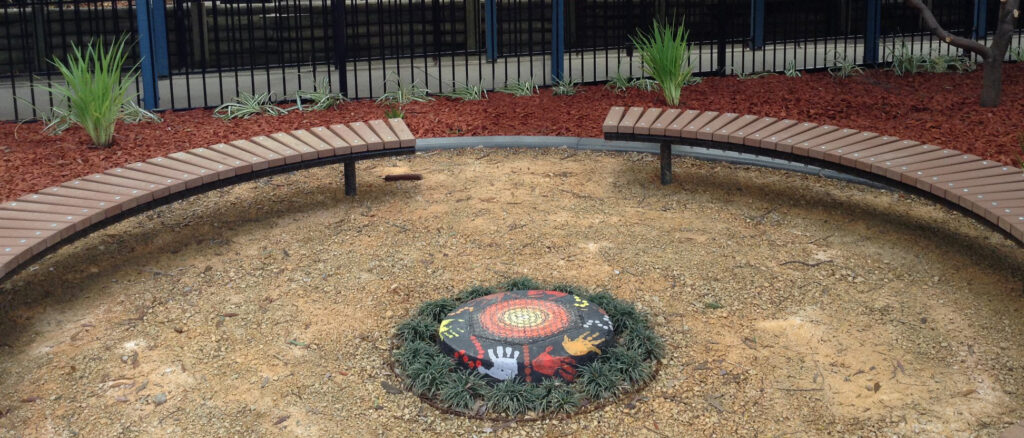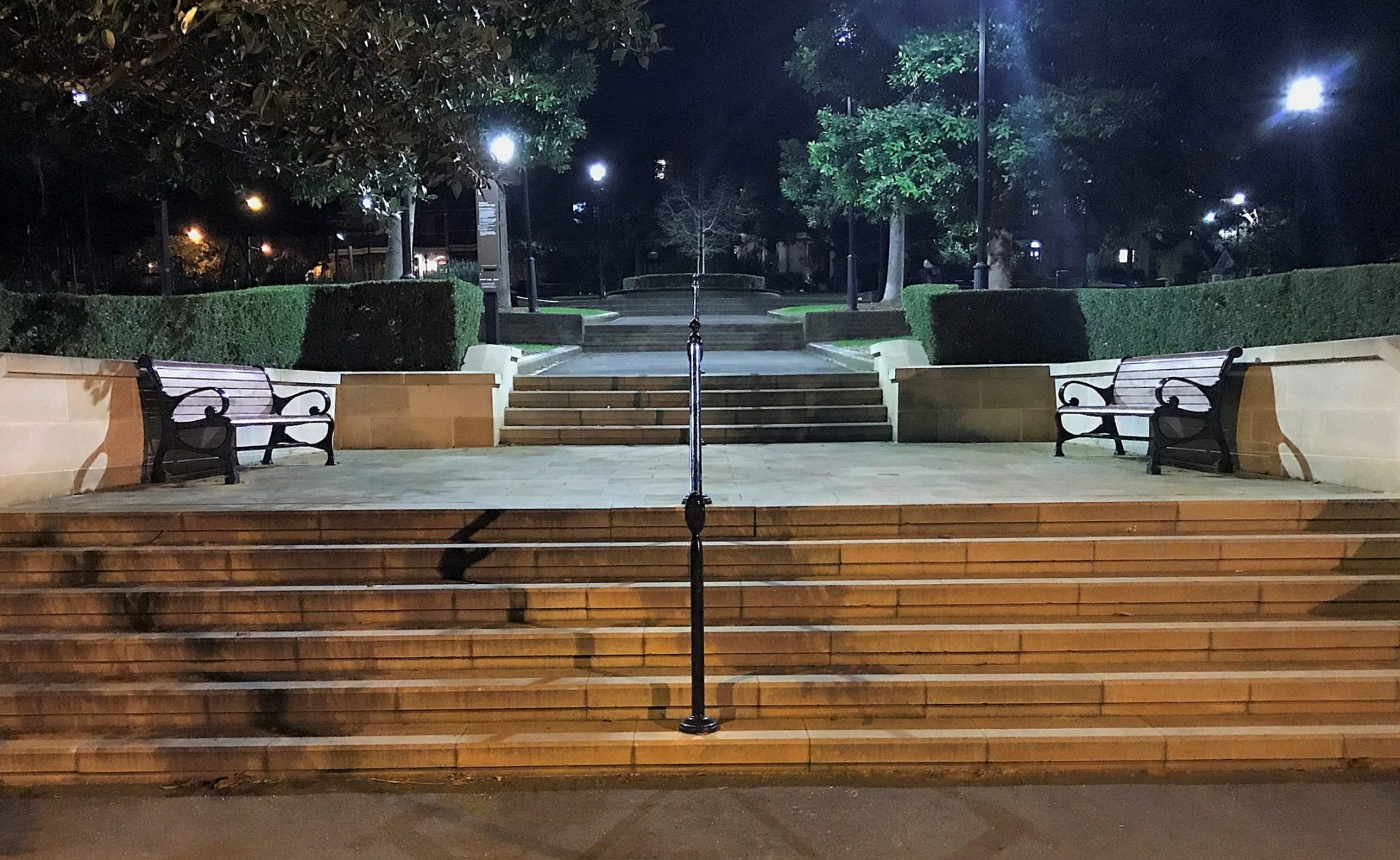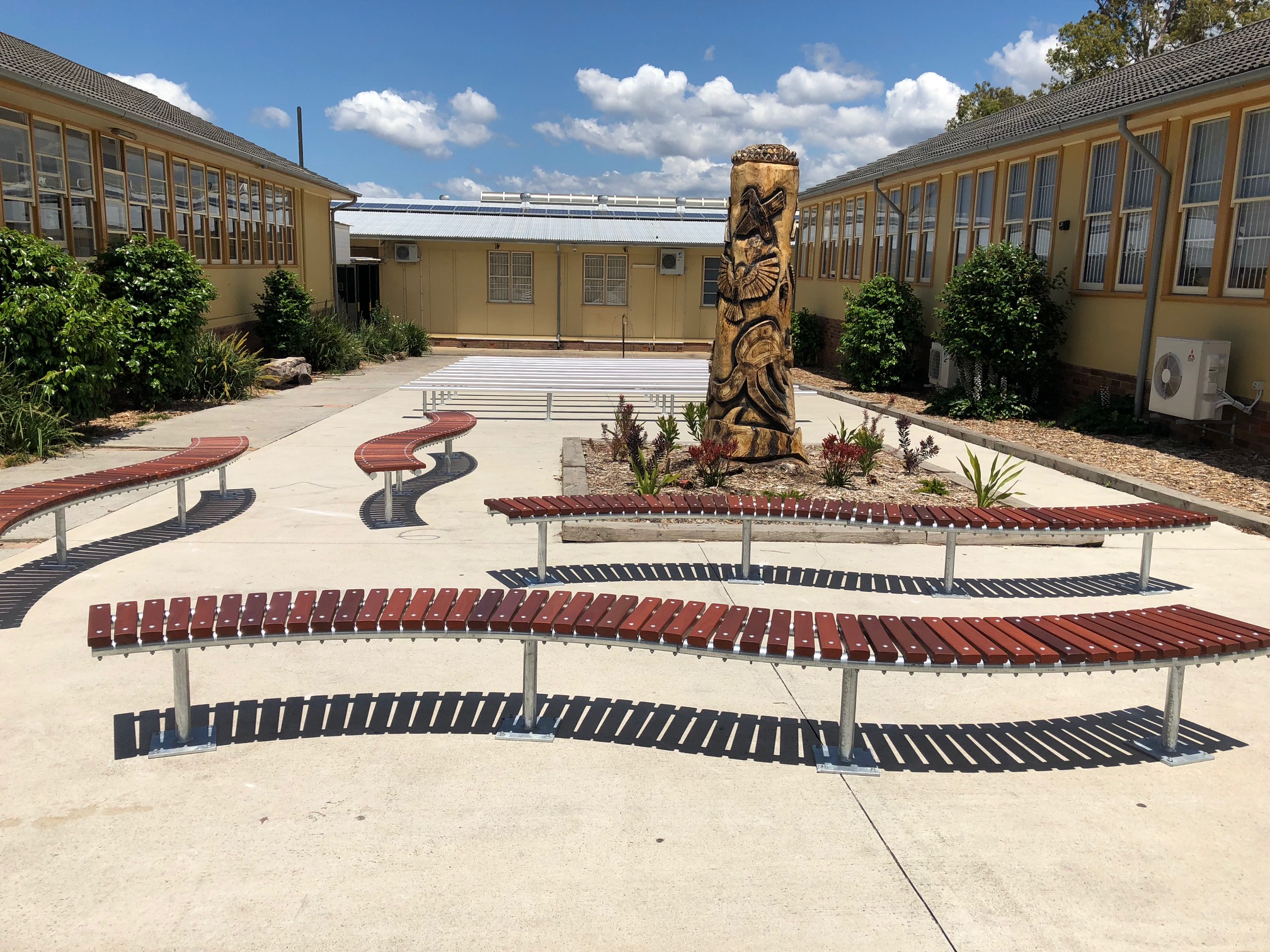Australian Indigenous patterns of gathering contain important keys for building cohesive modern communities, creating spaces for building connection and understanding. Particularly in an educational context, the tradition of gathering in a “Yarning Circle” creates a space for stories, history, wisdom and experiences to be shared. As a nod towards NAIDOC week and Indigenous Literacy Day, the Emerdyn team has assembled this informational resource for schools, community organisations, landscapers and designers wanting to integrate spaces inspired by yarning circles into their rhythm of community gatherings. The use of outdoor learning spaces will be central, as educational institutions look to create a “new normal”, post-Covid.[1] Integrating public gathering areas such as contoured seating areas has been a successful strategy which many schools have applied to facilitate students gathering in group learning formats.
What is a Traditional Yarning Circle?
Yarning circles are community gatherings among the Aboriginal and Torres Strait Island people, who meet to share their experiences, knowledge and stories.[2] Cognizant of the fact that people hold different worldviews, these public meeting places or yarning circles are peaceful,[3] giving utmost respect to the voice or opinion of every member in the circle. Members speak in turn, in a clockwise direction, listening to one speaker at a time.
Significance of Yarning Circles in Indigenous Communities
As a central point of connection in which community members speak and listen to each other from the heart, yarning circles cultivate deep and sincere communication,[4] and active listening.[5] They are critically important in the building of respectful relationships, where participants interact in an honest, trustworthy and responsible manner.[6] Participants are encouraged to keep eye contact during these community meetings.[7]
Yarning circles provide a safe environment for people to listen and respond to each other, fostering accountability. The families, clans and tribal groups engage in a harmonious and cohesive manner, collaborating towards maintenance and sustenance of knowledge through generations[8] as well as mentoring younger generations.[9]
Traditionally, farmers would gather in circles while standing to discuss elements like wool prices or the weather,[10] whilst others had an opportunity to share success stories, creating space to support and encourage each other.[11]
The yarning circle also allowed generational knowledge on biodiversity and land-management practices to be passed down – something which contemporary Australian society now benefits from as some of these practices are applied today.[12]
Lessons from History of Yarning Circles: Aboriginal & Torres Straight Island Cultures
Student-to-student and school-to-community interactions can be enhanced through yarning circles. A foundational principle of the circles is that all are considered equals – hierarchies are not recognized. Rather than focus on criticism or problem solving, yarning circles focus on strengths, paying more attention to the knowledge and abilities of participants. This encourages collaborative relationships and creates positive expectations of members within the circle.[13] As differences in opinion are accepted, common ground is formed through dialogues, narratives and interactions.
Beliefs and identities can be shaped by family and community stories, where members are empowered to courageously honor their own personal experiences and those of others.[14] In this context, young people can actually be educated about their own cultures, while addressing indigenous issues as well.[15] Through intentional planning, community spaces become a reflection of culture and heritage, contextualizing to outsiders how locals live their lives in their respective places.[16] The community space thus provides a sense of belonging and collective responsibility. Bound together by cords of their shared encounters, community members are able to work through tensions, problems or common issues.[17] The primary method of learning used by members of the circle is observation – rarely are questions asked.[18] The aim of the yarning circle is to have people from various groups in the community meet together and participate in substantive democratic discourse,[19] an important factor for schools and all community groups to integrate into their built environment.

EM038 contour bench by Emerdyn, artwork by Quakers Hill Public School.
References
[1] https://qed.qld.gov.au/about-us/news-and-media/classroom-of-the-past-and-future
[2] https://www.defenceconnect.com.au/key-enablers/4585-yarning-circles-bring-indigenous-culture-to-adf-recruit-training-2
[3] Ibid.
[4] https://www.schoolsreconciliationchallenge.org.au/activities/yarning-circle/
[5] Ungunmerr-Baumann, M.R. (2002). Dadirri: Inner deep listening and quiet still awareness. Port Macquarie, NSW, Australia: Emmaus
[6] https://www.qcaa.qld.edu.au/about/k-12-policies/aboriginal-torres-strait-islander-perspectives/resources/yarning-circles
[7] https://others.org.au/features/the-yarning-circle/
[8] https://www.hcq.org.au/wp-content/uploads/2019/07/Day2Yarning-Circle.pdf
[9] https://hatch.macleay.net/aborigina-yarning-circles-being-adopted-in-nsw-schools-naidoc-week/
[10] https://slll.cass.anu.edu.au/centres/andc/yarning-circle
[11] Thursday Island Torres News, 21 March 2012
[12] https://ensia.com/features/indigenous-knowledge-biodiversity/
[13] Calma, T. (2017). ‘Be inspired’: Indigenous Education Reform. Australian Human Rights Commission.
Retrieved from http://www.humanrights.gov.au/news/speeches/be-inspired-indigenouseducation-reform
[14] Sheehan, N. (2012). Stolen generations education: Aboriginal cultural strengths and social and emotional well-being, Brisbane: Link-Up QLD.
[15] https://www.un.org/press/en/2003/hr4674.doc.htm
[16] https://www.cct.org/2016/08/revitalizing-public-spaces-for-conversation-creativity-and-play/
[17] https://bmchealthservres.biomedcentral.com/articles/10.1186/s12913-019-4490-6
[18] https://www.qcaa.qld.edu.au/about/k-12-policies/aboriginal-torres-strait-islander- perspectives/resources/yarning-circles
[19] https://methods.sagepub.com/reference/encyclopedia-of-action-research/n58.xml
 48
48 0
0

